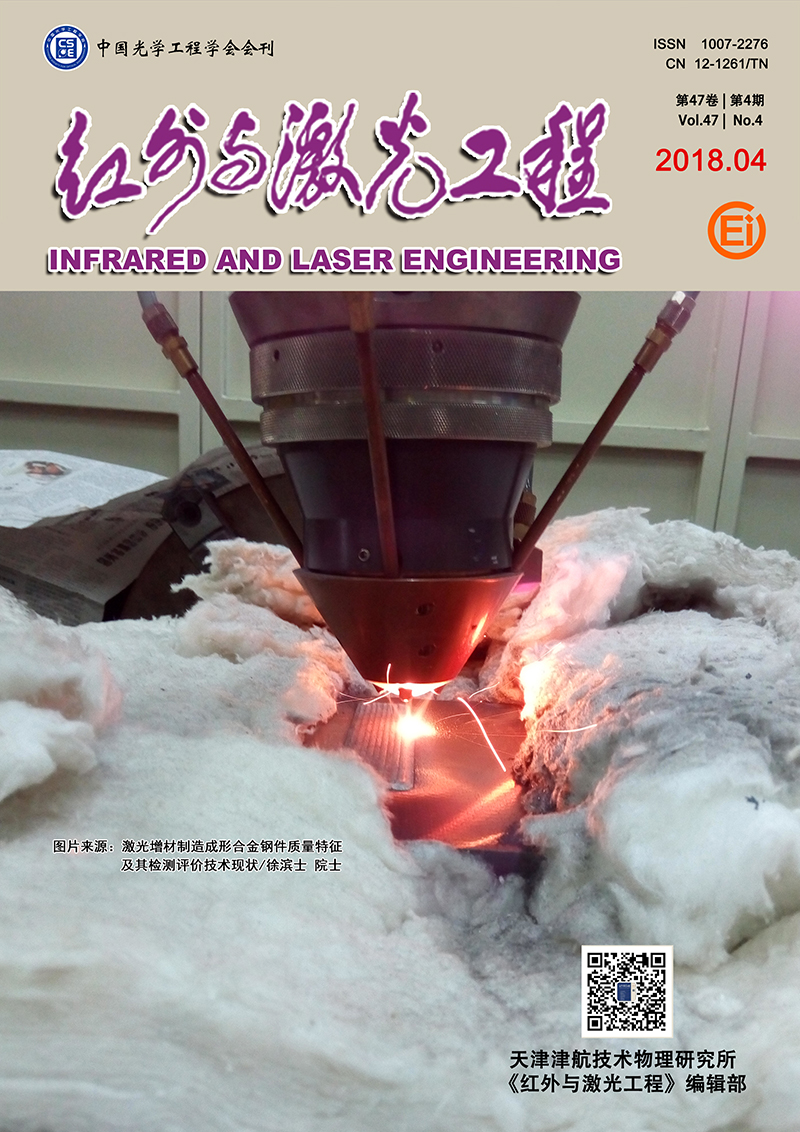Zuo Weikang, Zhu Yadan, Qiu Min, Liu Jiqiao, Chen Weibiao. Influence of performances of APD detector on CO2 concentration error retrieved by lidar measurement[J]. Infrared and Laser Engineering, 2018, 47(4): 406002-0406002(7). doi: 10.3788/IRLA201847.0406002
| Citation:
|
Zuo Weikang, Zhu Yadan, Qiu Min, Liu Jiqiao, Chen Weibiao. Influence of performances of APD detector on CO2 concentration error retrieved by lidar measurement[J]. Infrared and Laser Engineering, 2018, 47(4): 406002-0406002(7). doi: 10.3788/IRLA201847.0406002
|
Influence of performances of APD detector on CO2 concentration error retrieved by lidar measurement
- 1.
Key Laboratory of Space Laser Communication and Detection Technology,Shanghai Institute of Optics and Fine Mechanics,Chinese Academy of Science,Shanghai 201800,China;
- 2.
University of Chinese Academy of Sciences,Beijing 100049,China
- Received Date: 2017-11-08
- Rev Recd Date:
2017-12-03
- Publish Date:
2018-04-25
-
Abstract
Space-borne integrated path differential absorption(IPDA) lidar has been regarded as an efficient method to measure the concentration of the global atmospheric CO2 column concentration all day long. As a key part of the lidar receiver, the performance of the photodetector has a significant influence in the overall lidar system. Avalanche photodiode(APD) is widely used in space-borne lidar because of its large dynamic range and high responsivity. The basic theories of the APD detector and the IPDA lidar were briefly introduced. And taking the actual working conditions of the space-borne IPDA lidar into account, the actual performances of an APD detector such as the detector's responsivity, dynamic range, linearity and the signal to noise ratio under different optical powers were tested. Then based on the experiment result, the influence caused by the performances of the detector on concentration inversion was analyzed. The result shows that, when the CO2 concentration is 400 ppm, and the on-line wavelength output voltage of the APD detector is between 280 mV and 980 mV, the CO2 concentration error caused by the non-linearity and noise of the APD detector is less than 0.8 ppm.
-
References
|
[1]
|
Li Yi, Wu Qingwen, Chen Liheng, et al. Thermal control system of carbon dioxide detection instrument[J]. Optics and Precision Engineering, 2015, 23(4):1053-1061. (in Chinese)李毅, 吴清文, 陈立恒, 等. 二氧化碳探测仪的热控系统[J]. 光学精密工程, 2015, 23(4):1053-1061. |
|
[2]
|
Qu Yi. Technical status and development tendency of atmosphere optical remote and monitoring[J]. Chinese Optics, 2013, 6(6):834-840. (in Chinese)曲艺. 大气光学遥感监测技术现状与发展趋势[J]. 中国光学, 2013, 6(6):834-840. |
|
[3]
|
Qu Hengkuo, Zhang Qingyuan, Ruan Youtian. Laser radar based on scanning image tracking[J]. Chinese Optic, 2012, 5(3):242-247. (in Chinses)屈恒阔, 张清源, 阮友田. 扫描成像跟踪激光雷达[J]. 中国光学, 2012, 5(3):242-247. |
|
[4]
|
Sun Hang, Zhang Haibo, Cao Lihua, et al. Error compensation for primary mirror shaking of large aperture optical detection equipment[J]. Optics and Precision Engineering, 2014, 22(1):85-91. (in Chinese)孙航, 张海波, 曹立华, 等. 大口径光电探测设备主镜晃动的误差补偿[J] 光学精密工程, 2014, 22(1):85-91. |
|
[5]
|
Shi Chenglong, Liu Jiqiao, Bi Decang, et al. Errors analysis of dioxide carbon concentrations measurement by airborne lidar[J]. Infrared and Laser Engineering, 2016, 45(5):0530001. (in Chinese)史成龙, 刘继桥, 毕德仓, 等. 机载激光雷达测量二氧化碳浓度误差分析[J]. 红外与激光工程, 2016, 45(5):0530001. |
|
[6]
|
Xie Yangyi, Liu Jiqiao, Jiang Jiaxin, et al. Wavelengths optimization to decrease error for a space-borne lidar measuring CO2 concentration[J]. Infrared and Laser Engineering, 2014, 43(1):88-93. (in Chinese)谢杨易, 刘继桥, 姜佳欣, 等. 使CO2浓度测量误差减小的星载激雷达波长优化[J]. 红外与激光工程, 2014, 43(1):88-93. |
|
[7]
|
Xiong Qian, Lan Tian, Zhu Qi, et al. Design and implementation of indoor visible light communication avalanche photodiode detecting circuit[J]. Infrared and Laser Engineering, 2015, 44(2):731-735. (in Chinese)熊倩, 蓝天, 朱祺, 等. 室内可见光通信APD探测电路的设计与实现[J]. 红外与激光工程, 2015, 44(2):731-735. |
|
[8]
|
Lisak D, Rusciano G, Sasso A. An accurate comparison-line of line-shape models on-line H2O line in the spectral region-line around 3 m[J]. Journal of Molecular Spectroscopy,2004, 227:162-171. |
-
-
Proportional views

-









 DownLoad:
DownLoad: